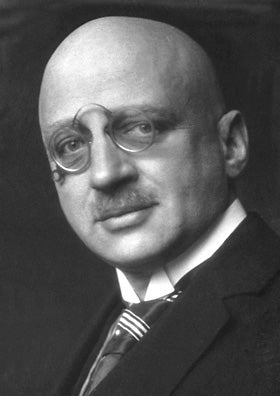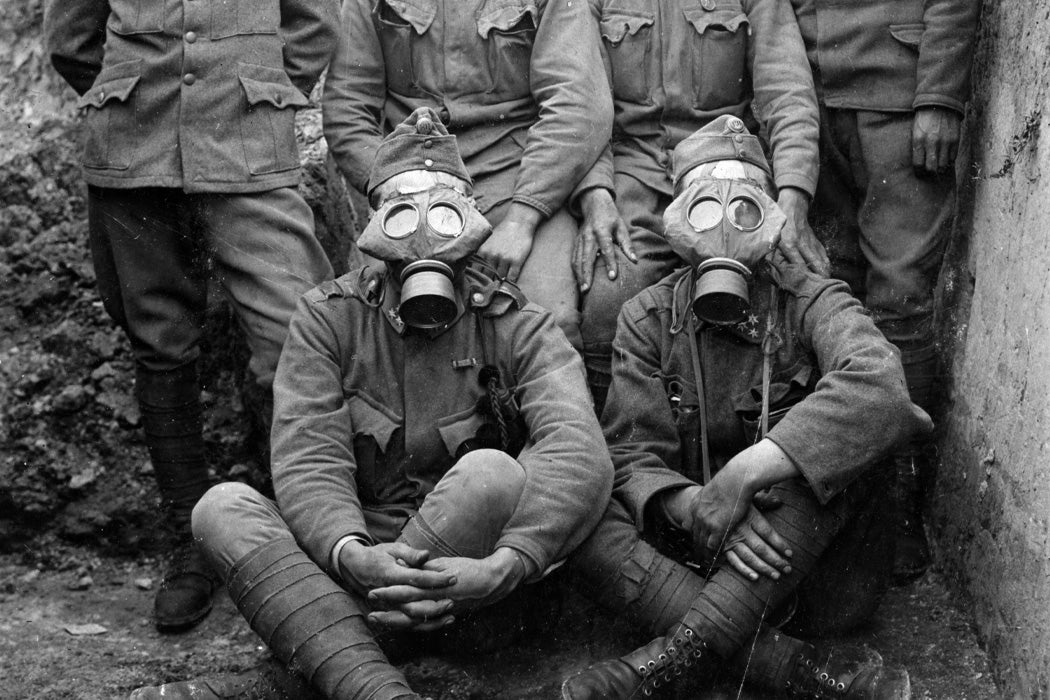Fritz Haber was the chemist who figured out how to synthesize ammonia out of atmospheric nitrogen. Once chemist/engineer Carl Bosch applied this to an industrial process, it allowed for the virtually limitless production of fertilizer. This was an unparalleled boon to agriculture, which had previously depended on guano and other substances to replenish soil. For this, undoubtedly one of the most important discoveries in chemistry, Haber was awarded the Nobel in 1918.
But the same process could also be used to produce the nitrates that allowed Germany to continue making explosives during World War I. Prevented from importing nitrates by blockade, Germany would have been without high explosives if not for Haber.
Fritz Haber was the driving force behind the German use of chemical weapons during WWI. His wife, Clara Immerwahr, a noted chemist in her own right, “pleaded with Haber repeatedly not to work on techniques of chemical warfare,” writes S. Ramaseshan in his short biography of the “amoral scientist.” But under Haber’s enthusiastic leadership, Germany initiated the modern era of chemical warfare by deploying chlorine gas in Belgium in April 1915. By some reports, 5,000 people died.

Soon after, Clara Immerwahr shot herself. She died in the arms of her twelve-year-old son, Hermann. Hermann killed himself in 1946. Ludwig Haber, Fritz’s son from his second marriage, called his father “unscrupulous.”
Of course, Fritz Haber wasn’t alone as a man of science working on the technologies of mass destruction. As scholar William Van der Kloot notes, eight future Nobel laureates contributed to Germany’s gas warfare program. The “academic-industrial-military complex” would go on to develop weapons inconceivable during WWI.
As for Haber, his Nobel didn’t trump his Jewishness in the eyes of the Nazis. All his patriotic efforts meant little to the anti-Semites. When Hitler came to power in 1933, Haber fled to England, dying soon after.
Weekly Digest
But the story of this amoral scientist doesn’t end with Haber’s death in 1934. Research led by Haber resulted in a pesticide marketed as Zyklon. German chemist Bruno Tesch and others tweaked this mixture of highly toxic hydrocyanic acid into Zyklon B. By 1942, Zyklon B was being used in the gas chambers of extermination camps at Auschwitz and elsewhere. A million people were gassed with this poison. Among those murdered were Haber’s own relatives.







